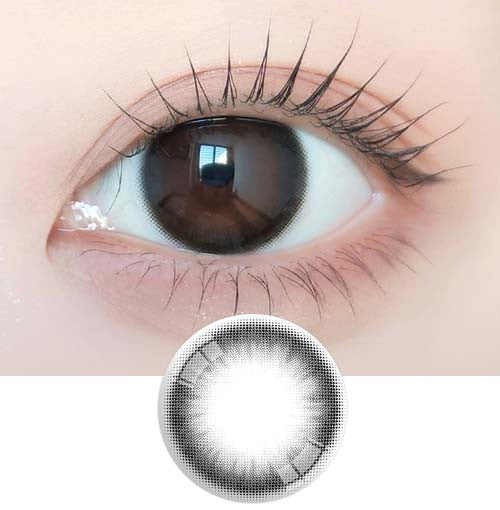Common Eye Disorders and Vision Diseases Explained
•Posted on April 30 2025
Your eyes are essential to how you interact with the world, so it’s understandable to feel uneasy when your vision changes. Even relatively minor symptoms like blurry vision, dryness, or discomfort can interfere with daily life. But what do these signs really mean?
In this article, we’ll introduce some of the most frequently encountered eye disorders and diseases, with clear explanations of what each condition involves. Whether you’ve recently noticed something different in your eyesight or are just looking to learn more, this guide will help you get familiar with common eye issues.
(Please remember—only a qualified eye care professional can diagnose or treat a medical condition. This guide is for general understanding, not self-diagnosis.)
👁️ Looking for infectious conditions like conjunctivitis? Check out our separate article: Eye Infections 101.
What Are Refractive Errors?
Refractive errors are among the most widespread eye conditions and are often the reason why people wear glasses or contact lenses. These disorders occur when the shape of the eye prevents light from focusing correctly on the retina. As a result, your vision may appear blurry at certain distances.
During an eye exam, your eye doctor will measure how light enters your eyes and determine whether you have one of the following types of refractive errors:
Nearsightedness (Myopia)
If faraway objects appear blurry while nearby items are clear, you likely have myopia. This occurs when light entering the eye focuses in front of the retina instead of directly on it. Myopia is increasingly common worldwide—some estimates suggest that nearly half the global population may be affected by 2050.
Farsightedness (Hyperopia)
People with hyperopia often struggle to see objects up close, like reading material or phone screens. In this case, the light is focused behind the retina, making near vision harder to maintain.
Astigmatism
This condition is caused by an uneven curvature of the cornea or lens. Because of this irregular shape, light is scattered or distorted as it enters the eye, resulting in blurred vision at both near and far distances. Thankfully, corrective lenses or specialized contacts can help adjust for astigmatism.
Presbyopia
Presbyopia is often confused with farsightedness, but the two conditions are not the same. This age-related vision change occurs when the lens of the eye loses flexibility, making it harder to focus on nearby objects.
In a healthy eye, the lens shifts shape to direct light onto the retina. As we grow older, this flexibility gradually decreases. The lens becomes less responsive, and sometimes thicker, which leads to difficulty reading small print or focusing up close.
People with presbyopia typically find relief through reading glasses, or by using bifocal or multifocal lenses that provide clarity at various distances. Though presbyopia is a normal part of aging, a proper vision correction method can make daily tasks much easier.
Eye Movement Disorders and Related Vision Conditions
Some eye conditions can interfere with how the eyes move and align, sometimes earning them misleading or overly casual nicknames. While these issues are often labeled as “eye muscle disorders,” they may also have neurological origins. In this section, we’ll review several eye movement disorders and a few other common vision problems that affect how the eyes function and process visual information.
Amblyopia (Lazy Eye)
Amblyopia is a condition in which one eye fails to develop normal visual ability. It usually appears in early childhood when the communication pathway between the eye and the brain doesn’t form as it should. As a result, the brain begins favoring the stronger eye and relies on it more heavily over time.
This condition is often referred to as “lazy eye” because the weaker eye may drift or appear misaligned. However, the term “amblyopia” is more accurate, as the issue lies in visual development rather than a lack of effort.
Strabismus (Crossed Eyes)
Strabismus is characterized by misalignment between the two eyes. One eye may turn in a different direction—up, down, inward, or outward—while the other maintains focus. This misalignment may be due to muscle imbalance or to the brain not properly coordinating eye movement.
Strabismus can appear in childhood or adulthood and may be constant or intermittent. In many cases, it can be treated with glasses, vision therapy, or surgery.
Nystagmus
Nystagmus refers to rapid, uncontrolled movements of the eyes, typically side to side. This motion may be present at birth or develop later due to neurological issues, inner ear disorders, or certain medications.
People with nystagmus often experience reduced depth perception and may feel that their environment appears shaky or unstable, especially when trying to focus on a specific point.
Additional Common Eye Conditions
Glaucoma
Glaucoma is a group of diseases that gradually damage the optic nerve, often due to elevated pressure inside the eye. Because the optic nerve carries visual signals from the eye to the brain, damage to this structure can lead to vision loss or blindness.
The condition typically develops without noticeable symptoms in its early stages, which is why routine eye pressure checks are important for early detection and management.
Cataracts
A cataract forms when proteins inside the eye’s lens begin to break down, causing part of the lens to become cloudy. This cloudiness interferes with the way light passes through the lens, leading to blurry or dim vision.
Cataracts are most commonly age-related but may also result from trauma, medical conditions, or prolonged UV exposure. When vision becomes significantly affected, cataract surgery is a reliable and safe option for restoring clarity.
Retinal Eye Disorders
The retina is a critical part of the eye that plays a central role in vision. Located at the back of the eyeball, this light-sensitive layer captures images and sends them to the brain through the optic nerve. When the retina becomes damaged or deteriorates, the effects on eyesight can be severe—sometimes leading to permanent vision loss. Below are some of the most common retinal conditions to be aware of.
Age-Related Macular Degeneration (AMD)
Macular degeneration is a condition that typically appears later in life. It affects the macula, the small central portion of the retina responsible for detailed, straight-ahead vision. As this area becomes thinner or damaged with age, tasks like reading, driving, and recognizing faces can become increasingly difficult.
AMD is a major cause of vision loss among older adults and one of the leading contributors to blindness in individuals over 60.
Diabetic Retinopathy
Diabetic retinopathy is a complication of diabetes that impacts the retina’s blood vessels. Prolonged high blood sugar levels can damage the delicate vessels, causing them to leak, swell, or become blocked. In some cases, abnormal new blood vessels grow but function poorly.
If left untreated, diabetic retinopathy can lead to serious vision problems, including blindness. Maintaining good control of blood sugar and blood pressure can significantly reduce the risk of progression.
Retinal Detachment
A retinal detachment occurs when the retina separates from the back wall of the eye. This detachment prevents the retina from functioning properly and can quickly lead to vision loss if not treated.
Retinal detachment may result from trauma, aging, or underlying medical conditions. Warning signs include sudden flashes of light, an increase in floaters, or the appearance of a dark curtain or shadow across your field of vision. If you notice any of these symptoms, seek emergency medical attention right away.
Corneal and Vision-Related Eye Disorders
The cornea is the transparent outer layer at the front of the eye, acting as both a shield and a light-focusing surface. It plays a vital role in visual clarity and eye protection. Several conditions can affect the cornea, with one of the most recognized being keratoconus.
Keratoconus
Keratoconus develops when the cornea becomes thinner and begins to bulge outward into a cone-like shape. This irregular shape disrupts how light enters the eye, resulting in distorted or blurry vision.
In early stages, glasses or specially fitted contact lenses can help. In more advanced cases, surgical treatments like corneal cross-linking or corneal transplant may be necessary to stabilize vision.
General Vision Disorders and Changes
In addition to specific eye diseases, people can experience broader vision issues. These may not always be diagnoses themselves, but are often signs of underlying eye conditions. If you notice any of the symptoms below, it’s important to speak with your eye care provider.
Low Vision
Low vision describes significant visual impairment that cannot be corrected with standard glasses or contacts. It’s typically caused by conditions like macular degeneration, cataracts, or glaucoma, and can interfere with everyday tasks such as reading or recognizing faces.
Night Blindness
Night blindness, or nyctalopia, makes it difficult to see in dim lighting or at night. This condition doesn’t cause total blindness after dark, but it does impair the ability to navigate in low-light environments. It may be linked to vitamin A deficiency, cataracts, or inherited retinal disorders.
Vision Changes
Some vision changes, like the gradual need for reading glasses, are a natural part of aging. However, sudden changes—such as flashes of light, sudden blurriness, or dark shadows—can indicate serious problems like retinal detachment or vascular issues in the eye, and should be evaluated immediately.
Color Blindness
Color blindness affects how individuals perceive certain colors. In most cases, it’s a genetic condition that limits the ability to distinguish between red and green, or less commonly, blue and yellow. Because the genes responsible are carried on the X chromosome, color blindness is more frequent in men than in women. While there is no cure, special lenses and digital aids can help with color recognition in daily life.





